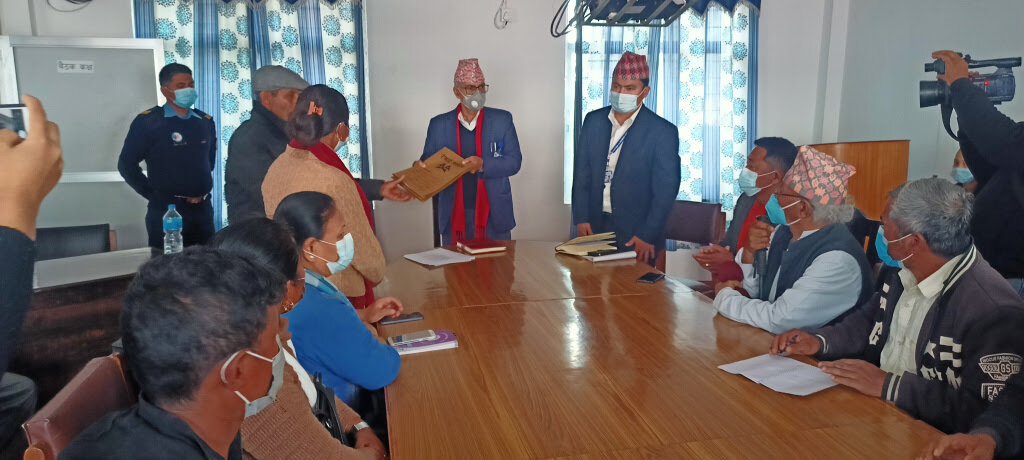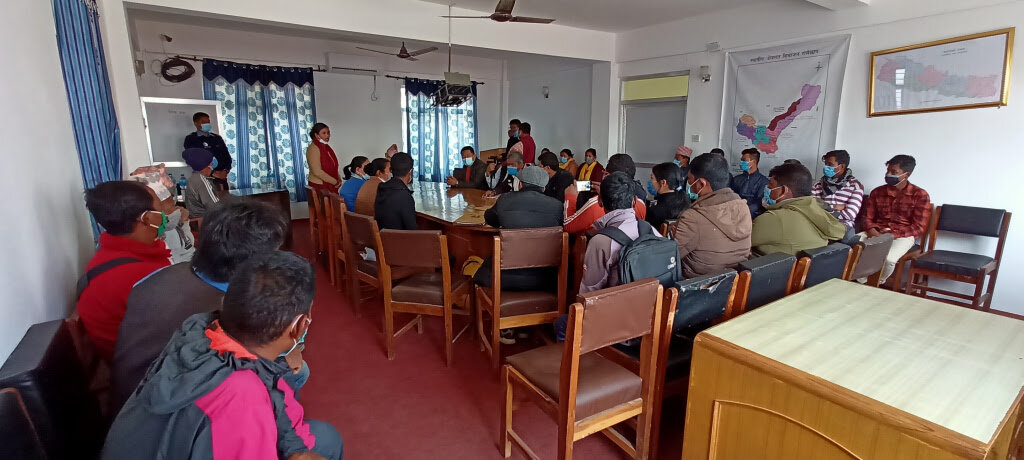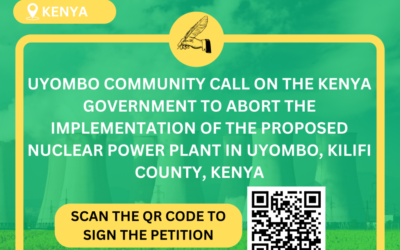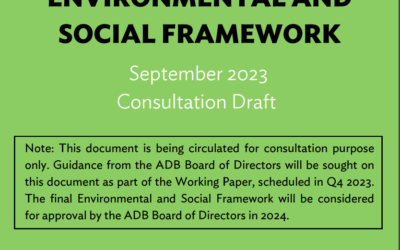Indigenous Majhi and other communities affected by the Sunkoshi-Marin Diversion Multipurpose project in Ramechhap district in eastern Nepal have submitted a 13-point memorandum to the local authorities on Sunday expressing their discontent with the project. They have alleged that they have not been adequately informed and meaningfully consulted about the project and that there has not been an agreement on the decision making of the project, including in relation to land acquisition.

Sunkoshi-Marin Diversion Multipurpose Project Affected Committee submitted the memorandum with signatures of more than 300 affected persons of six villages that lie within the inundation area of the project in Ramechhap district to the District Administration Office, Manthali municipality, Khadedevi rural municipality, Land Revenue Office as well as representatives to the federal and provincial parliaments from the district. The memorandum was also submitted to the Ministry of Energy, Water Resources and Irrigation and the Office of the Prime Minister and Cabinet of Minister through the District Administration Office.
Aimed to provide irrigation facilities to 122,00 hectares of land in five districts in southern Nepal by diverting water from Sunkoshi river to Marin Khola, the Sunkoshi-Marin Multipurpose Diversion Project – termed as project of national pride – will also generate 28.62 MW of hydroelectricity. As stated in the memorandum, the under-construction project will inundate ancestral lands, riverbanks and sacred sites of indigenous Majhi and other local communities that they have traditionally used or acquired. That will displace the communities, deprive them of agriculture, fishing, boating and other livelihoods and negatively impact their religious, cultural and social lives.
Around 90 percent of the people living in the inundation area belong to highly marginalized Majhi community. However, as per the memorandum, the inundation area determined without effective representation of the Majhi community and the land acquisition notice published by Nepal government in September 2020 have caused uncertainties among the affected communities while they also do not agree with the rate of compensation fixed by the official Compensation Determination Committee without their representation.
The Committee representing the affected communities has warned of series of protests if the authorities do not take concrete steps to address their following 13-point demands within fifteen days.
- Information related to the Sunkoshi Marine Diversion Multipurpose Project, including the Environmental Impact Assessment Report, should be made available in language and form understandable to the affected communities.
- Affected indigenous Majhi and other communities should be meaningfully consulted and their Free, Prior and Informed Consent (FPIC) must be obtained on the decisions of the project impacting the communities.
- As there is uncertainty and disagreement among the affected communities about land acquisition and other impacts of the project on the properties (houses, lands, sheds, etc.) as well as the riverbanks and other lands and resources of the communities with or without their legal titles, a field survey should be redone with participation of the concerned communities to ascertain the impacts of the project or acquisition of properties and lands and to determine fair compensation. In particular, there should be representation of the affected communities in the Compensation Determination Committee.
- If the land and properties must be acquired, arrangement should be made for land for land and house for house compensation of the same quality and value for the land or house acquired as per the desire of the affected household. Similarly, proper arrangements should also be made for the houses, cowshed, lands and resources of the affected indigenous Majhi communities that they have traditionally used or occupied but do not hold legal ownership titles to.
- Affected communities should be allowed to use the lands and properties that will be acquired until inundation and the crops and trees affected by the inundation should also be provided fair compensation.
- Each family in the affected area should be provided an employment per household in the project based on skills and capacities. There should be a free training from the project to increase the capacities of those affected.
- The project should be transformed into a company and the affected indigenous Majhi and locals should be provided free shares of the project and free electricity generated from it.
- The money that will be provided to the local government of the affected areas under the Community Development Program of the project should be used especially for the benefit of the affected Indigenous Majhi and local communities in participation of the communities. In particular, model settlements should be developed in the inundation area through the development of education, health, transportation, electricity, drinking water, communication and other infrastructures. In addition, necessary survey should be undertaken, and concrete walls should be constructed for the protection of the villages around the inundation area, including lands, schools, and physical infrastructure therein.
- The revenue received from the project by the local and state governments (25% each) should be used for the benefit of the affected Indigenous Majhi and local communities with the participation of the affected communities.
- In the reservoir formed by the project, tourism and boating programs should be conducted through local committees of the affected Majhi communities to preserve their traditional skills and livelihoods, and the government should provide necessary assistance for such programs.
- As no assessment has been made of the serious negative impacts on the culture of the Indigenous Majhi affected by the project, including the inundation of the ghats (sites for boat landing/crossing and holding fairs), cultural impact assessment for the project should be undertaken with participation of the affected communities. The project should implement programs to preserve the culture, language, and costumes of the Majhi tribe with the participation of the communities. In particular, funeral sites (sites for making offerings to the departed) and places for fishing of the Majhis should be managed. In addition, public properties including temples, religious sits and rest houses should be properly protected and developed.
- Special programs should be put in place for the protection and development of women, children and senior citizens of the project affected areas.
- The rights of indigenous Majhi and local communities should be ensured in course of the implementation of the project in accordance with Convention No. 169 of the International Labor Organization (ILO C169) and other international laws. In particular, the specific rights of the affected indigenous Majhi to the local resources should be guaranteed.
Click here to read this website post in Nepali and the original memorandum in Nepali.

Source: CEMSOJ



0 Comments